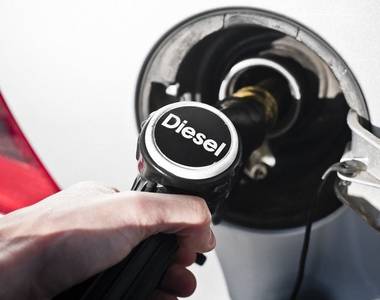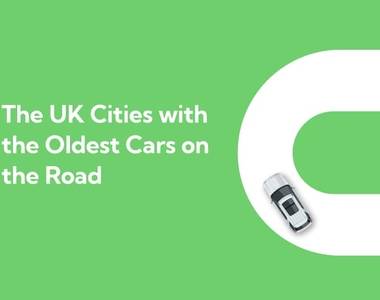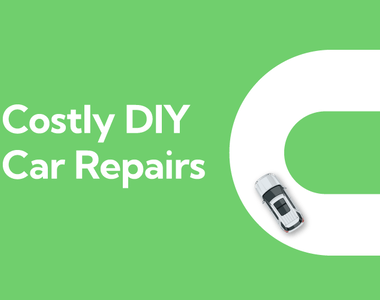Fuel economy is a hot topic. Prices at the pumps rarely go down – so if you want to keep an eye on your financial outgoings, maximising fuel efficiency is a great step.
At Car.co.uk, we're good at separating the facts from the fiction when it comes to how you can save fuel. In fact, we’ve put together 22 fuel saving tips that we think every car owner should know. So, if you’re keen to know what will improve fuel consumption, you’re in the right place!
1. Plan your journeys around fuel performance
Our first ‘how to save petrol’ tip doesn’t actually have anything to do with your car – instead, it’s all about where you’re driving it.
Poor journey planning can add any number of undesirable variables to your drive – including excessively long routes, traffic congestion, poor quality roads, obstructions, and much more. The hold-ups these create all mean your engine is running for longer than it needs to – and using more fuel as it does.
More modern sat-navs often come with live traffic updates – and will alert you or redirect you to less congested routes. If you prefer to plan your journey with a map – a quick online search will help you consider any specific roads or unfavourable times to be hitting towns or cities.
2. Use your stop/start to increase car efficiency
UK rush hour drivers spend more than 28 hours every year in stationary traffic – and, if you’re based in London, that figure rises dramatically to over 74 hours. It’s fairly obvious that you wouldn’t let your car idle on your driveway for that amount of time – so, if possible, you shouldn’t do it in traffic either.
Many modern cars are fitted with intelligent start/stop systems, cutting the engine off when the car is stationary. The engine starts again when the clutch is pressed, or the brake is released – allowing you to pull away as normal.
Contrary to some popular opinion, the start/stop system does save fuel – as it will usually only kick in when the car is warm, so generally, minimal engine effort is required to restart the engine. As well as decreasing car fuel consumption, an automatic start/stop system also helps to reduce emissions in busy areas – meaning both your finances and the environment see a benefit.
3. Be careful when refuelling
It’s a fuel saving tip that people often doubt – but being careful with the fuel pump nozzle when you’ve refuelled your car really can make a difference to the money in your pocket in the long term.
The reason is fairly simple. The valve that is opened when you pull the nozzle trigger is before the exposed metal part of the nozzle that enters your car – as such, that metal nozzle can retain a small amount of fuel when you stop dispensing the diesel or petrol.
Surprisingly, it can hold up to 250ml of fuel, so waiting a few seconds before you retract the nozzle will allow it to drain into your tank – rather than get splashed down your paintwork or on to the forecourt. The amount of money you save is unlikely to be life-changing, but since you’ve paid for the fuel, you should definitely make sure it goes into your vehicle.
4. Drive smoothly and at the best average speed for MPG
If you want the ultimate tip on how to improve MPG (miles per gallon) – you should aim for 2 things; a smooth drive – and an efficient average speed.
Smooth driving generally involves steady acceleration and deceleration – minimising the need for stopping, starting, and changing speed quickly. When compared to increasing the speed of a slow-moving car, your engine has to work much harder to get your car in motion from a standstill. As such, if you can make your speed changes more gentle, you’ll create a slightly higher average speed, and see fuel economy improvements.
‘Read the road’ is another way of saying ‘think ahead’ – and it’s a big factor in how to drive economically.
While you obviously don’t know what’s around corners, there are plenty of road features you can account for before you reach them. Traffic lights, roundabouts, junctions, and speed restrictions all feature on this list – so, instead of reacting to them suddenly, you can often anticipate changes, especially on known routes.
Thinking ahead like this gives you the chance to increase the consistency of your speed – improving car fuel consumption enormously.
6. Don’t rev the engine
If there had to be an outright winner for an instance when your vehicle will use more fuel than is necessary – it’s when its engine is being revved unnecessarily.
Now, that might disappoint petrolheads who like the sound of their engine – but the fact of the matter is, freely revving your car is doing nothing but burning additional fuel. So, no matter how impressive it sounds, if you want to keep money in your pocket – ease off the revs.
7. Turn off the air-con
At Car.co.uk we’re often asked, “does air con use more petrol?”
On a warm day, you might be sad to hear that yes; car aircon does use more fuel – so using it sparingly is a good way to save fuel when you’re driving.
The reason air con is notoriously bad for fuel economy relates to how it’s powered. All electrical components in your car draw power from the battery – but, like all batteries, the amount of charge it holds is limited. To make sure your battery doesn’t simply run flat when electrically powered systems in your car need power, your car has an ‘alternator’ – a type of generator that uses the turning of the engine to create electricity, constantly recharging the battery as the engine runs.
In simple terms, air con uses more fuel because it draws a lot of energy from the battery – so the engine has to work that little bit harder to drive the alternator and power the overall charging system. A harder working engine always uses more fuel – so if you want to know how to reduce fuel consumption; saving air con for only the hottest days is a very good step.
8. Use gears properly to improve fuel economy
If you’re keen to know how to drive more economically, your gear selection is likely to be worth considering.
As we now know, the smoother and more consistent your driving; the better MPG you’ll achieve – and using your gears correctly is an absolutely vital part of this. Generally speaking, you should change gear at around 2,500rpm in a petrol car, and at around 2,000rpm in a diesel car. What’s more, you shouldn’t let your car struggle in a higher gear if the revs are dropping.
At around 40mph, your car will 25% more fuel in third gear compared to fifth. Change up through the gears early to prevent unnecessarily high revs – it really is one of the best ways to save petrol.
9. Stick to the speed limit
Sticking to the speed limit isn’t just a great fuel saving tip, it’s also the very best way to make sure you keep your driving licence.
As well as being illegal, driving at 80mph in a 70mph national speed limit area could result in your car using between 15% and 25% more fuel. While it can be easy to let your speed creep up, the idea that you get to your destination much quicker isn’t actually true – and in fact, consistently breaking the speed limit on the motorway by 10mph will only see you gain 6 seconds for every mile you travel.
If you’re not in a rush and you’re willing to drop your speed a little below the 70mph limit on the motorway, you’re likely to see additional financial benefits too. In fact, travelling at around 55mph could reduce your fuel consumption by another 10% - getting you to your destination safely and with more money in the bank.
10. Reduce air resistance to decrease average fuel consumption
Car aerodynamic considerations aren’t just reserved for Formula 1 teams – they’re a vital consideration if you want to know how to improve MPG.
The good news is, most modern cars are designed with fuel efficiency in mind. Creating relatively aerodynamic cars helps manufacturers reduce CO2 emissions - and make their model’s anticipated MPG figures more appealing. However, a lot of this design finesse goes out of the window when we add roof racks, mud flaps, and other aftermarket accessories to our cars. We also change the aerodynamic properties of our vehicles when we open the windows.
Roof racks are the main offender here. If you’ve got one that stays on your car even when you’re not carrying bikes, canoes or holiday luggage, then you could be adding a significant amount of drag to your car. Also, if you’re tempted to open your windows (especially at higher speeds) then you’re letting air in that would normally rush over or around the car.
Decreasing aerodynamic efficiency like this means your engine has to work hard to move your car – and working harder requires extra fuel. Keep the windows up and leave the roof rack in the garage or the loft when it’s not in use. It might take you a little effort to put it on and off – but the financial benefits will quickly add up.
11. Use cruise-control for fuel efficient driving
“Does cruise control use more fuel? Or does it save fuel?” – at Car.co.uk, we’re asked this question frequently – and we’ve found there are mixed opinions on the internet.
In actual fact, using cruise control is more economical than controlling your car’s speed manually – but only when you’re driving on flat roads. As we’ve mentioned already in this guide, consistency of speed is an important part of how to save money on fuel, and this is exactly what cruise control does.
However, cruise control is likely to increase your fuel costs if you’re using it on hilly roads – as it won’t anticipate imminent changes, so your car will have to suddenly work harder to maintain speed on an incline.
If you want to know which cruise control driving techniques will save fuel – the tip is simple; just use it on flat roads.
12. Use the right fuel
You may have seen fuel retailers advertise ‘performance’ petrol and diesel products – sometimes referring to them as ‘super unleaded’ or ‘premium diesel’. The advertising campaigns that accompany these fuels often claim that these options offer great efficiency or will help you ‘get more miles out of a full tank’.
While these claims might be somewhat accurate for performance cars, the overwhelming majority of vehicles on UK roads won’t see any benefit – and the reason is all to do with how our engines work.
In petrol cars, our engines compress fuel before it is detonated in the cylinders. The higher the ‘RON’ octane rating of the fuel, the more it can be compressed – and the higher the compression, the greater the amount of energy that’s created at the point of combustion. The thing is, most car’s engines are optimised to work with standard fuel (95 RON) – so using enhanced fuel (97, 98 or 104 RON) will offer no benefit whatsoever.
It’s much the same story with premium diesel products too. Rather than a RON rating, diesel carries a cetane number (CN) which indicates its combustion quality. The higher the cetane rating, the more readily the diesel burns – increasing engine efficiency. Once again, high-performance diesel cars may see a slight benefit – but for most UK diesel vehicles, there will be no difference.
Of course – there is one big difference you’ll see buying premium fuels – and that’s the cost. Higher RON or CN options are often 10p more costly per litre, so, unless you’ve got a very high-performance car, if you want to know how to save money on petrol – the best plan is to go for standard fuel.
13. Use the correct oil
Using the correct engine oil in your car is vitally important when it comes to prolonging the lifespan of your vehicle – but it can also significantly impact fuel economy too. Using a thicker oil in a car that’s designed to run with a thinner product causes the engine to work harder, again, reducing fuel efficiency.
If you’re not sure exactly which oil your car should take, either refer to an industry guide – or make sure an automotive professional is handling your oil change.
14. Don’t rest on the brake
This is a quick and simple tip – but one that tens of thousands of drivers overlook. A great number of people drive with their foot resting lightly on the brake pedal – especially at low speed. While it’s important to be able to react quickly if there’s a reason to stop – resting your foot like this can apply the brakes very slightly – increasing the effort needed to move the car forward.
If you’re wondering “Why is my car using so much fuel?” – the answer could relate to how you rest your foot!
15. Avoid bad roads to save petrol
You may wonder what fuel consumption has to do with poor road surfaces and potholes – but in actual fact, the two things are very much connected.
In much the same way that air resistance will stop the car travelling forward in the most fuel-efficient way, increasing the ‘rolling resistance’ between the wheels and the road will also slow the car – or, if you want to maintain a certain speed, it will mean the engine has to work harder.
Proof of this can be seen in motorsports. While the racetrack surface is usually perfectly smooth; it’s surrounded by gravel traps that are designed to stop competitors hitting the barriers if they run off the tarmac. When someone does leave the track, they’re often doing 100mph+, yet the gravel quickly brings them to a halt.
If you want to make the absolute most of your fuel; sticking to roads that are smooth and well maintained will help. Although the gains are small on a daily basis, a rough commute can really add up over the course of a year.
16. Have your wheel alignment checked
The rough roads we’ve talked about in our last tip don’t just do a good job of slowing your car immediately – they can also cause your wheels and suspension components to become misaligned; an issue that will impact your fuel consumption and could impact the handling of your vehicle.
Your car’s wheels are designed to be parallel with each other. Although car suspension is designed to take the knocks and bumps of standard driving, awkward collisions with potholes, kerbs, raised iron-works, and other unusual road features can cause the wheels to lose this parallel alignment.
If you’ve ever pushed a shopping trolley that has one front wheel that doesn’t follow the other, you’ll know how much extra energy this misalignment uses – and the principle is the same with your car. Once again, more effort needed from your engine requires more fuel to move the car.
Having your wheel alignment checked at least annually (or perhaps more if you do a lot of miles) won’t just help improve fuel consumption – it will also save on costly tyres, ensuring they wear consistently.
17. Choose the right tyres
The UK’s taste in cars has changed fairly significantly over the last 5 years – with more and more people opting for SUV style vehicles. In reality, these mini-SUVs are generally ordinary cars that have been given an SUV makeover – often including chunky body kits, roof bars, and occasionally, more off-road styled tyres.
Of course, it’s not just SUVs that come with these chunkier tyres; it’s perfectly possible that you’ve chosen a rugged 4x4 as your road-going car – in which case, it’s possible that the tyres are designed for legitimate off-road use.
While these tyres might look the part on your chunky car, it’s highly likely that they increase the rolling resistance of the vehicle – meaning there’s more engine effort needed to accelerate and maintain speed. As we know, increased engine effort increases the amount of fuel used, so if you’re wondering how you can make your car more fuel efficient – checking your tyres are suitable for your kind of driving is absolutely key.
18. Economic drivers check tyre pressure
If you’re keen to know how to improve fuel economy, keeping an eye on your tyre pressures should frequently feature on your to-do list.
You’ll be able to find your manufacturer’s recommended tyre pressure levels in one of three places, which could be your vehicles user manual, inside the fuel cap cover or inside edge of the driver’s door.
Tyres pressures only ever go down with time – and when they do, it makes the softer tyre spread more surface area over the road. With more of the tyre touching the road, rolling resistance is significantly increased, causing your car to move less efficiently – as well as causing excessive wear on the outer edges of the tyres.
Of course, having your tyres properly inflated isn’t just a fuel-saving tip – it can also be a life-saving tip. Having the incorrect pressure in your tyres can significantly reduce your vehicle’s grip on the road – as well as increase the chances of tyre blow-outs, especially when under-inflated.
Don’t rely on your vehicle’s electronic tyre-pressure warning system to alert you to issues – as this often only recognises significant changes in pressure. Buy a tyre pressure gauge – they’re cheap and simple to use, it’ll almost certainly save you money on petrol – and could save your life.
19. Don’t ‘warm’ your car up
When winter takes hold, it can be tempting to sit in your cold car with the engine running until the vehicle produces enough heat to clear the ice from the windows and make driving more comfortable.
In reality, letting your car idle like this is doing nothing but burning fuel for convenience – so if you want a simple tip for better fuel economy it’s this; don’t do it! Clearing the car of ice on a dark winter morning is no one’s idea of a good time, but with the money you’ll save on fuel, you’ll be able to buy an effective window scraper and a warm pair of gloves!
20. Skip the short trips
Another quick tip and simple tip on how to reduce fuel consumption; don’t take the car if it’s a short trip.
Your car’s engine is far less efficient when it’s cold – so even if it’s raining and that quick walk to the shop doesn’t look appealing, going by foot will seriously reduce your fuel costs.
21. Make sure your car is serviced
If you’re interested in understanding how you can save fuel when driving, one of the best methods is to ensure your car is well maintained.
Modern cars are exceptionally complex – and all are now electronically controlled by at least one engine control unit (ECU). This central ‘brain’ relies on a network of sensors to monitor the performance of the vehicle – and will automatically adjust the amount of fuel that is injected into the engine based on a huge number of variables – from the engine temperature and air temperature outside the car to the style of your driving.
With such complicated systems running your car, it’s no surprise to realise there are lots of individual elements that can go wrong – and the only way you’ll know is to ensure your car is regularly serviced by a garage with the correct diagnostic equipment. During any service, consumables (filters, fluids, etc) will be swapped or changed – again increasing engine efficiency.
It might be slightly costly to have your car serviced, but the on-going fuel savings can be significant.
22. Remove excess weight
If you want to know how to improve fuel consumption, one of the best things you can do is to remove excess weight from the car. As we’ve noted elsewhere in this guide, resistance is the enemy of fuel economy – and adding weight to your car increases that resistance.
The boot is the main offending space for excess weight – so if you can move that buggy, gym bag, pair of wellies or other unnecessary items, your car is moving slightly less weight. A reduction in weight improves the efficiency of the engine – meaning a reduced amount of fuel is used to make the same journey.











